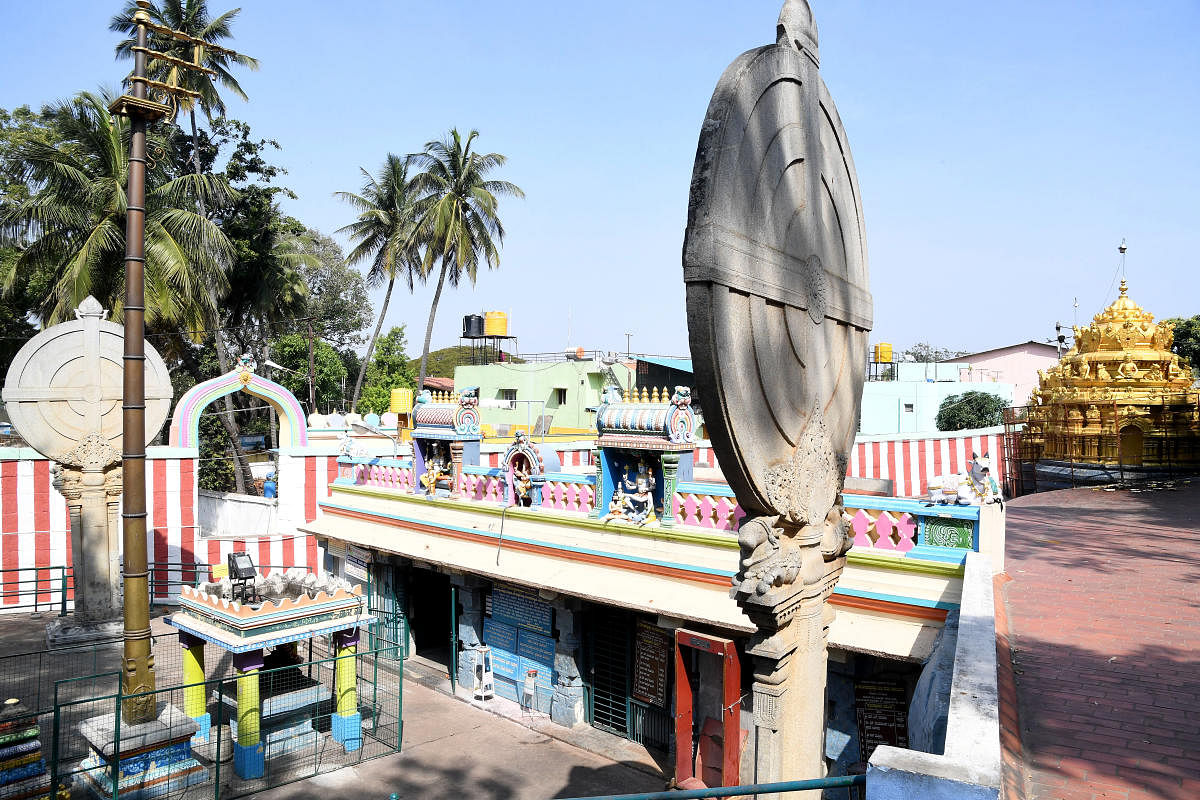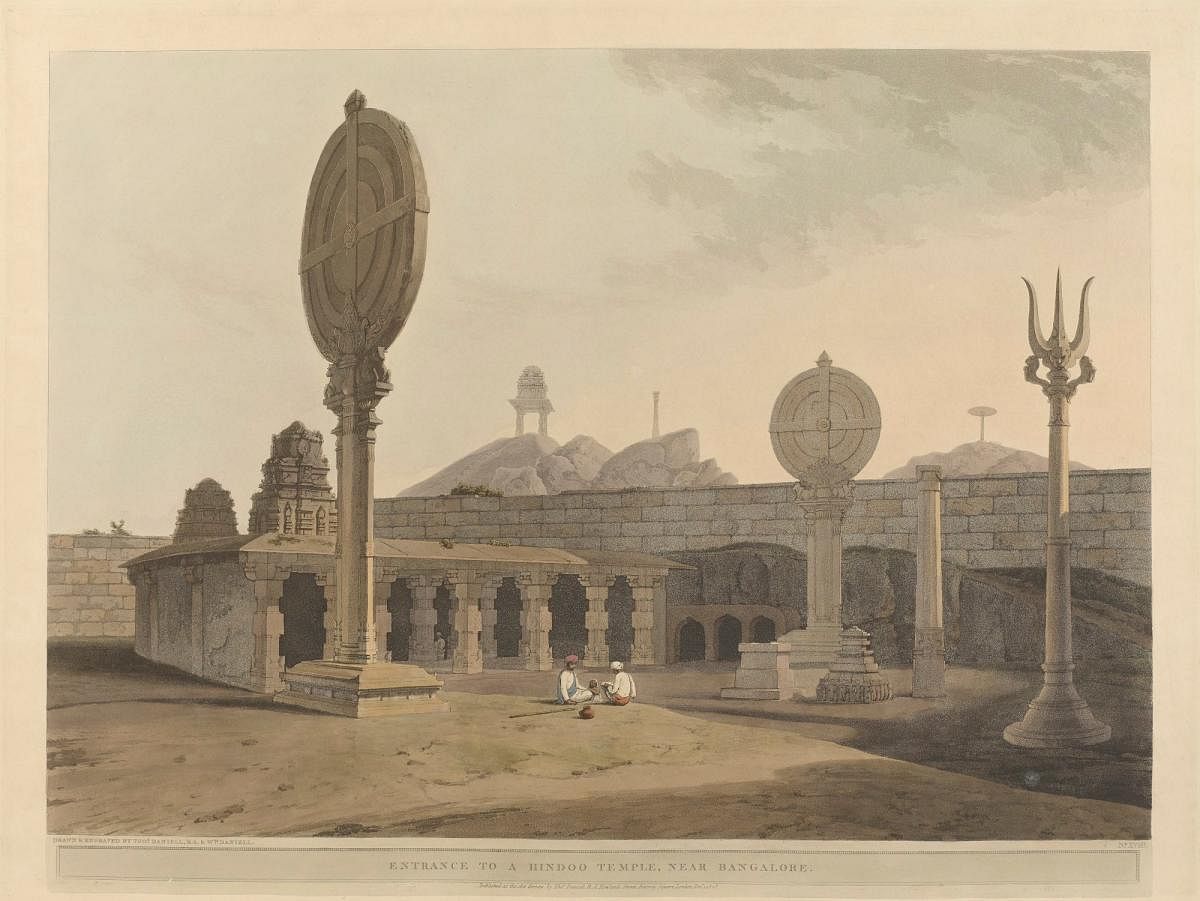

Makara Sankranti, which celebrates the end of winter, and falls on January 15 this year, is thought to be backed by hard science through the marking of the winter solstice at the Gavi Gangadhareshwara temple. But these beliefs don’t match the actual science at work at the famed 17th-century temple, scientists said.
For over 300 years, the temple in what is now Kempegowda Nagar was used by locals to record the solstice and the beginning of the seasons. Two large, two-metre discs in the temple courtyard, called the Surya Pana and Chandra Pana, are aligned in such a fashion that the falling shadow of one disc onto the other indicates the manifestation of the solstice.
But in the intervening years, changes to the temple’s architecture meant that the original date of the solstice, December 22, was changed to January 14, linking it to Makara Sankranti.
Dr B S Shylaja, of Jawaharlal Nehru Planetarium, who, with her students, cracked the scientific secrets of the temple, explained that while the temple’s purpose was well-known to the ancient denizens of the area, that its astrophysical antecedents have been forgotten in the intervening years.
“The passage of the setting sun through the cave of the temple on January 14 is a well-publicised event. This is when the rays falling from the southwestern part of the temple pass through an arch and a pair of windows placed perpendicular to each other, through the horns of a Nandi (bull), to illuminate the idol of the deity inside the cave for about 15 minutes. While the winter solstice is being given publicity because of the festival, the recurrence of this event during the summer solstice (June 21) has been ignored,” Dr Shylaja said.
But how to prove it? With the once-pastoral area around the temple now swallowed up by urbanisation and with no possibility of photographs to show what the temple looked like in
earlier centuries, scientists were initially stumped.
It was then that Dr Shylaja remembered a book which covered the work of the 18-19th century British artist Thomas Daniell and his nephew William, who had traversed the Indian landscape painting ultra-detailed architectural and natural vistas. The book contained two aquatint paintings showing the temple in the last decade of the 18th century.
When the Daniells had come upon the temple in the-then outskirts of Bengaluru on May 1, 1792, they were immediately struck by the wonder of the place.
For one, the temple abutted a cave, outside which the two large and strange discs had been mounted on poles. Second, the place appeared to have been deliberately abandoned, with thorns strewn across the entrances to prevent trespass. While the temple sported the usual icons of Hinduism which Thomas had grown accustomed to seeing in his travels over India, the upright discs fascinated him. He and his nephew settled down with their large retinue of servants and bearers to paint the unusual scene. The result would help scientists solve the centuries-old scientific mystery of the discs.
By examining Thomas’ painting, the scientists discovered that the passage of the sunlight into the cave was probably intended for marking the winter solstice, but that the subsequent constructions and renovations had perhaps modified it for January 14.
Scientists said that they believe that a pair of windows was later inserted into the temple, to enable the phenomenon to continue. An analysis shows that the inner window does not appear at all in the painting. “Plus, we know that the outer window is a recent addition to the temple,” Dr Shylaja said.
In many ways, the Gavi Gangadhareshwara temple is an anomaly. Unlike others which are aligned to a cardinal point, it has an oblique direction, not to mention its discs, which reveal a detailed understanding of astronomy. The alignment of the discs for sunset on June 22 exactly matches the alignment of sunrise on December 22, scientists clarified.
Cosmos
"There are four points in the elliptical orbital plane of the earth. Two are known as equinoxes, with equal days and nights, respectively on March 21 and Sep 23. The other two are known as solstices with the longest night and the shortest night respectively on Dec 22 and June 21."
- Dr Chrisphin Karthick, Indian Institute of Astrophysics
Mark your calender
The ideal dates for observing the Gavi Gangadhareshwara temple are as follows: one extending from November 26 to December 2, the second from January 13 to 16.
The summer solstice event can be watched from June 16- 26.